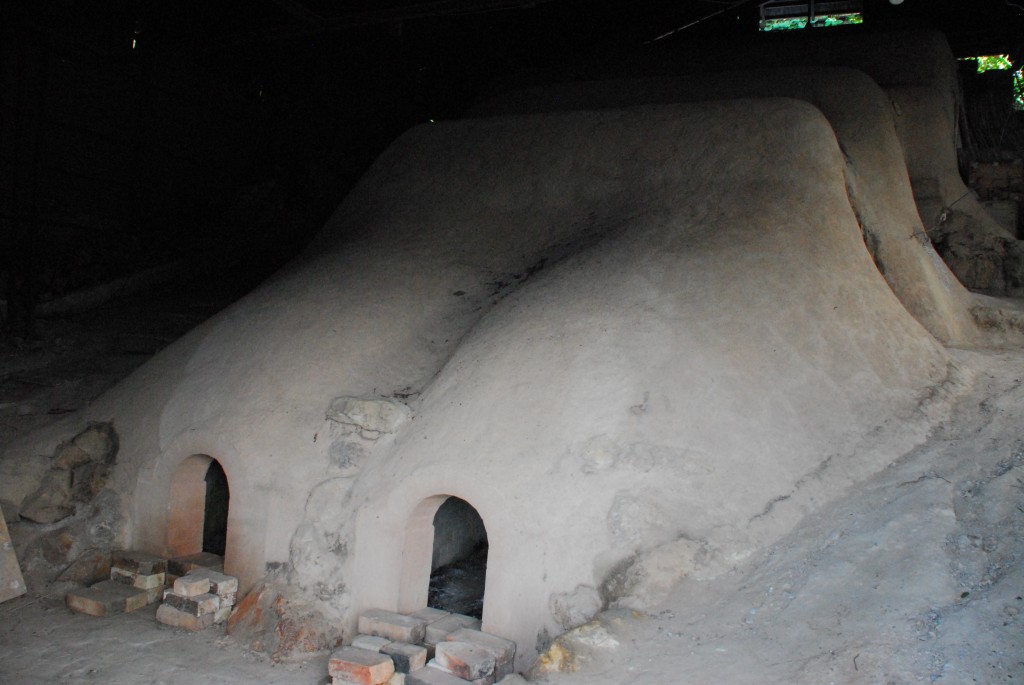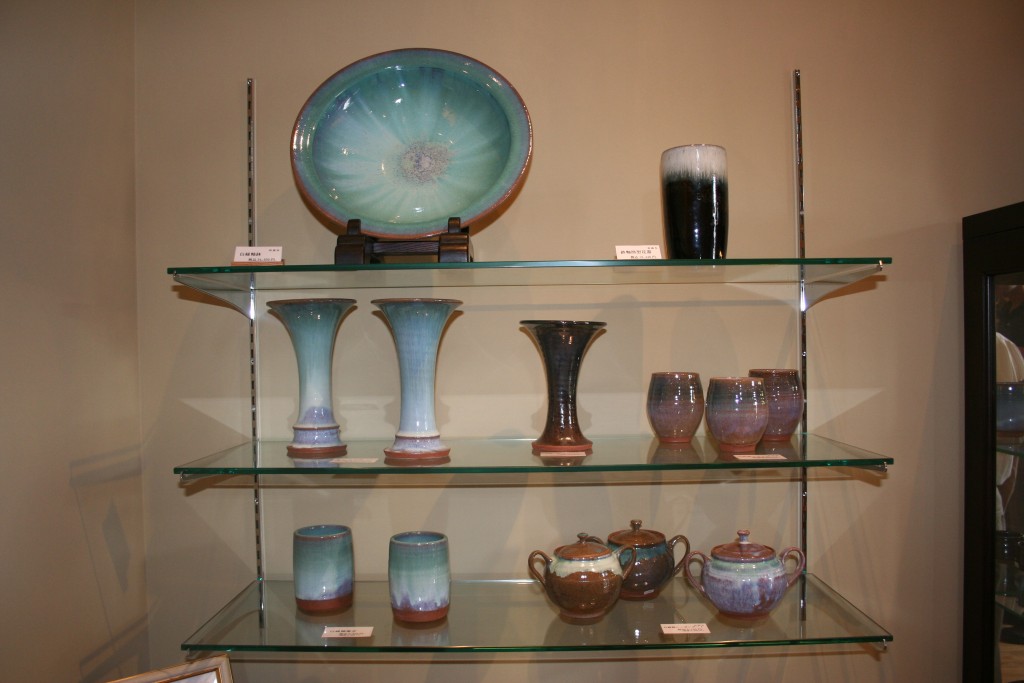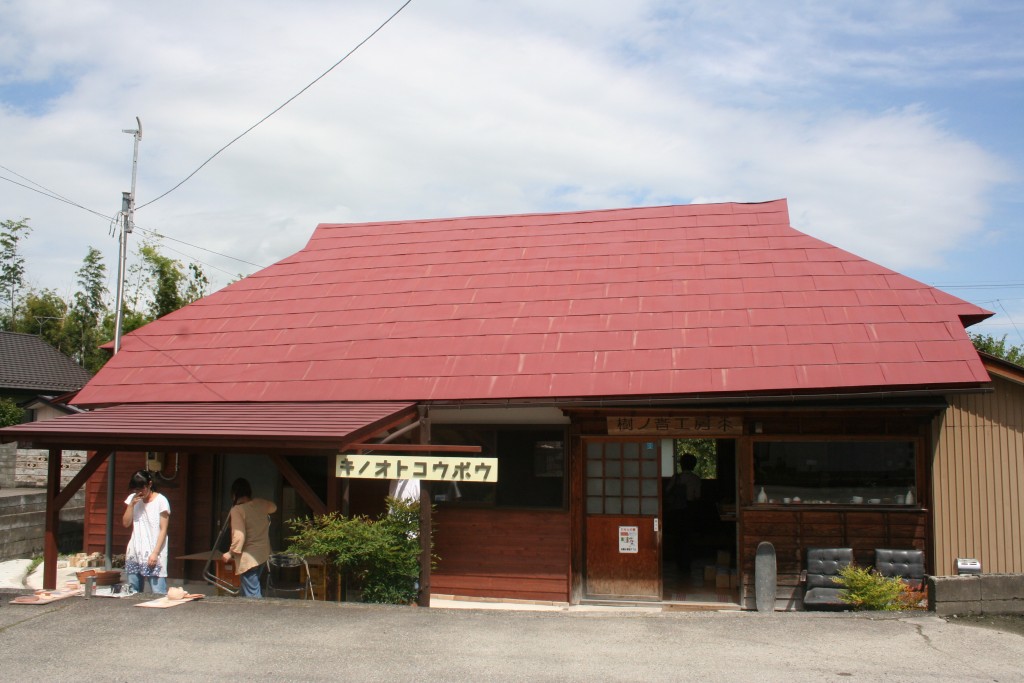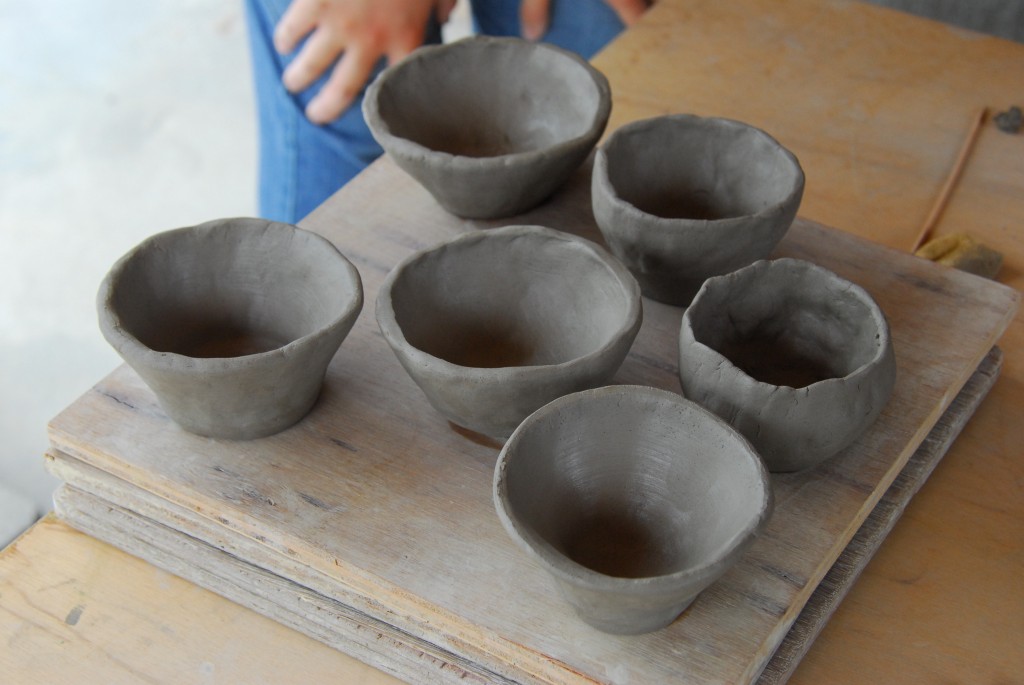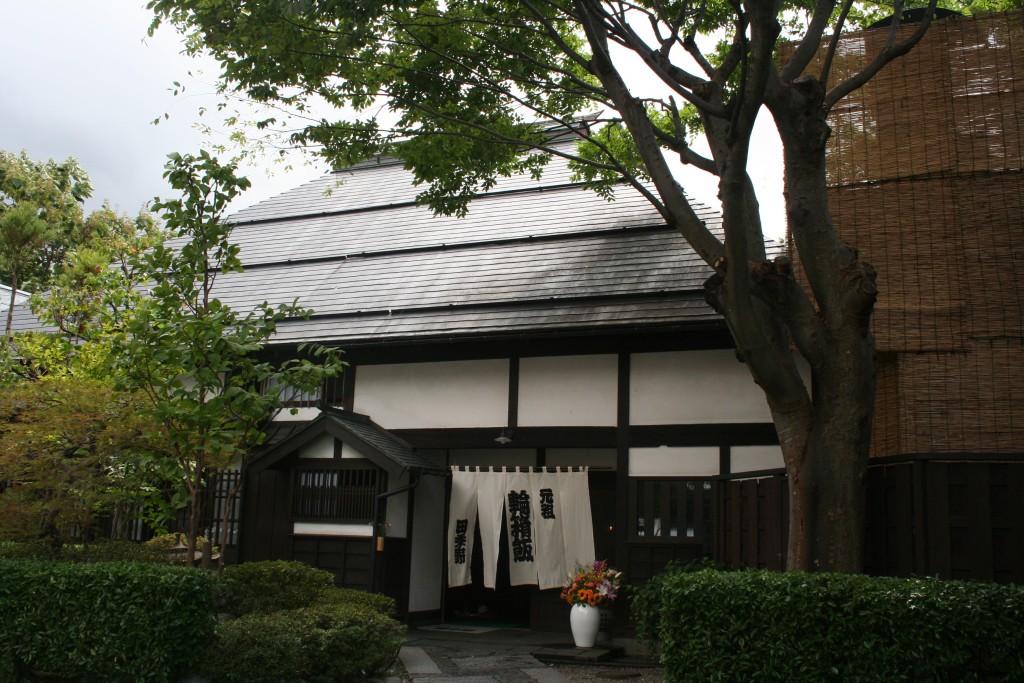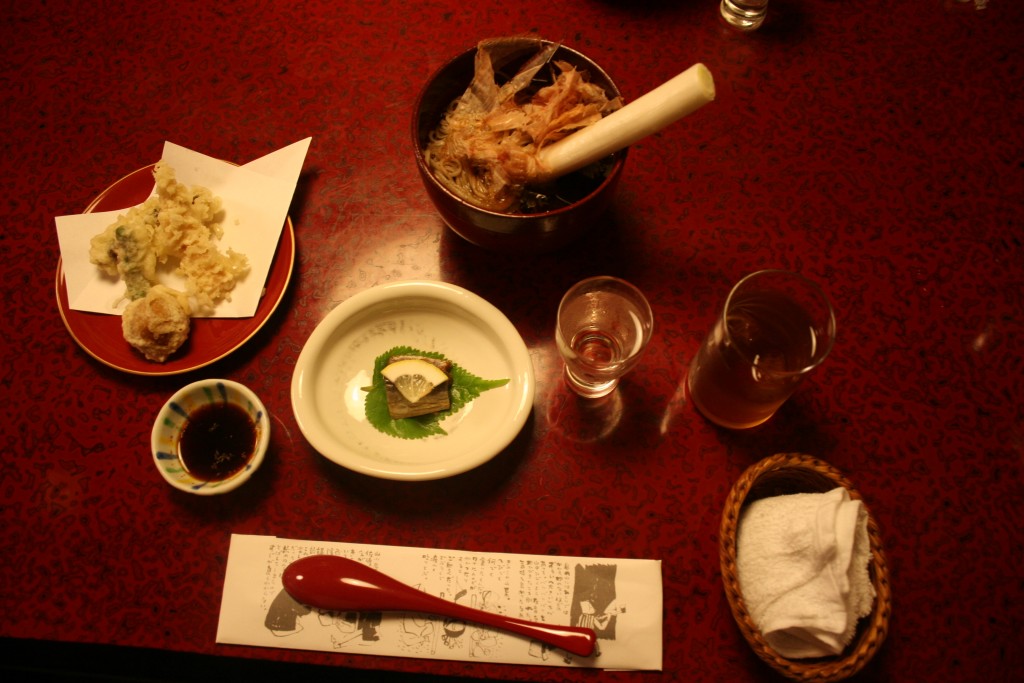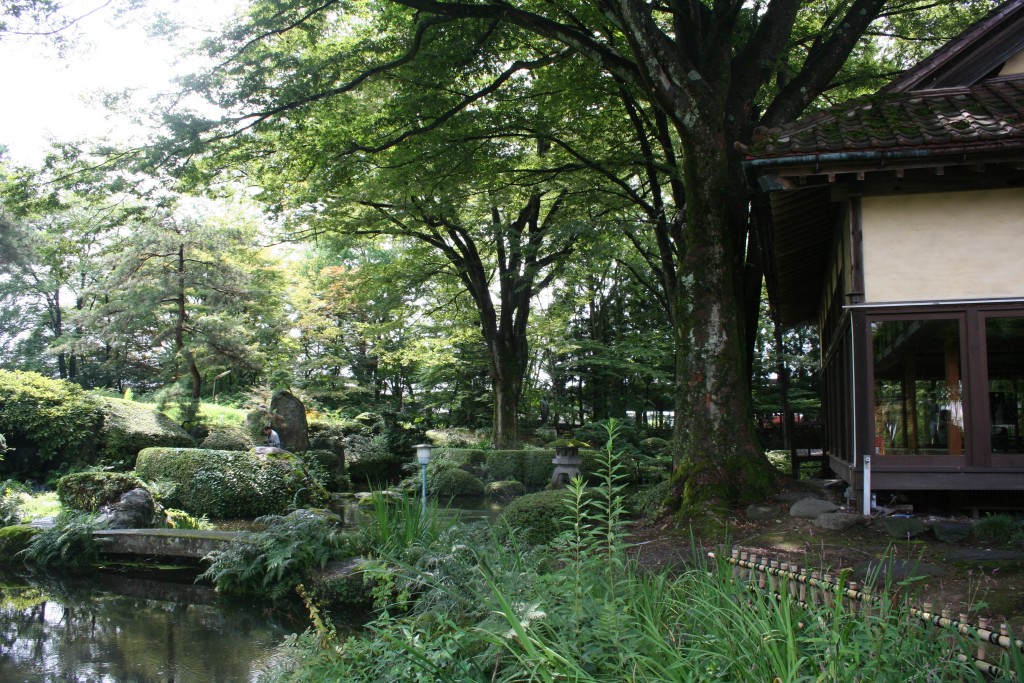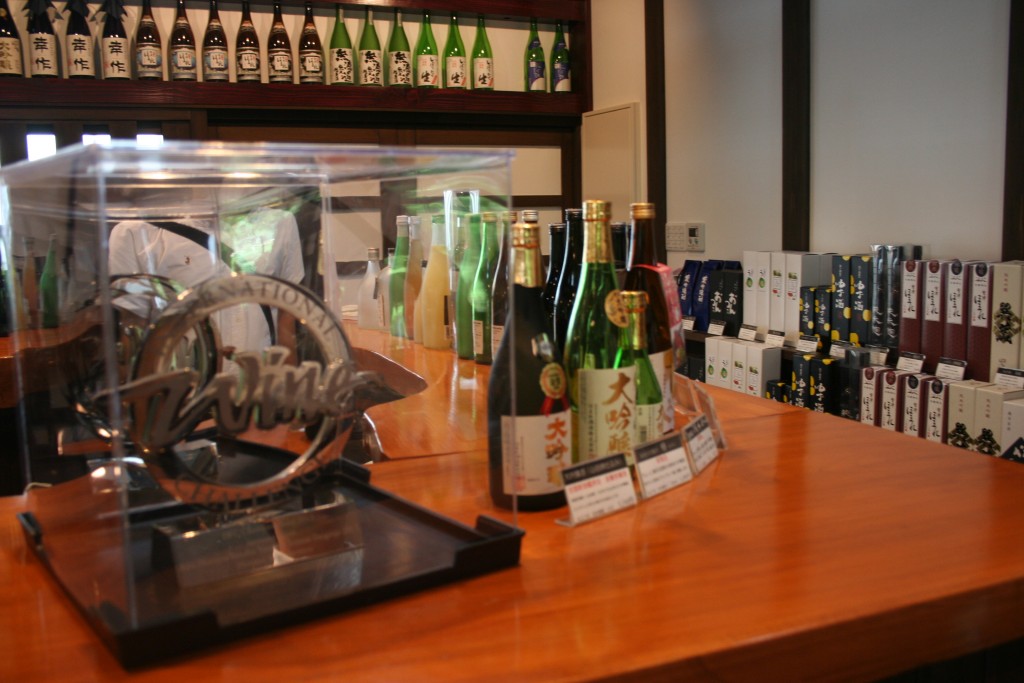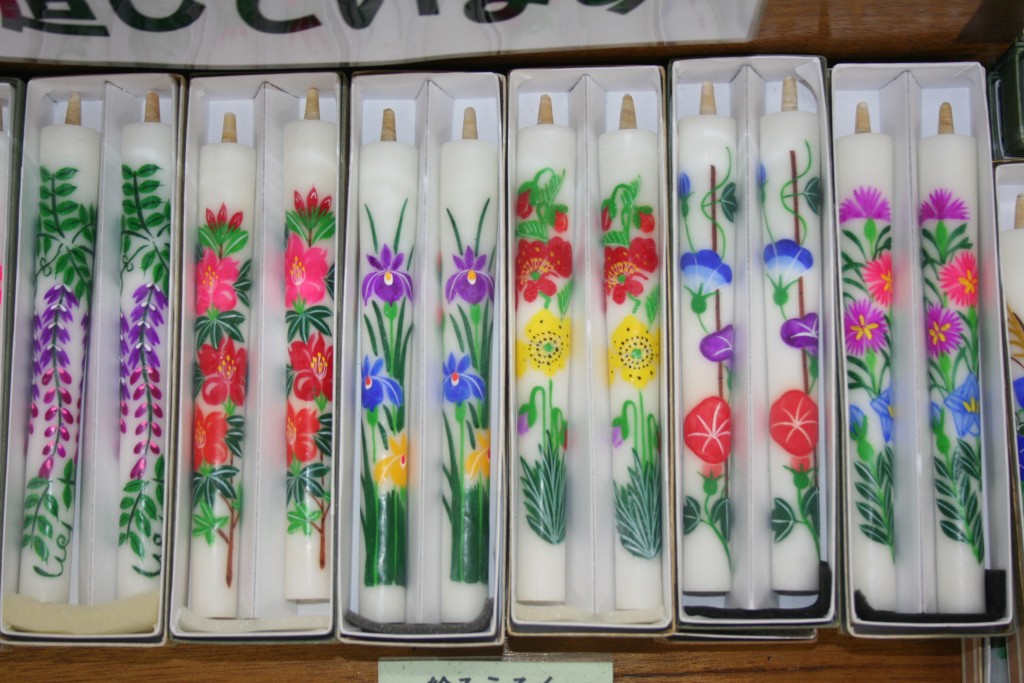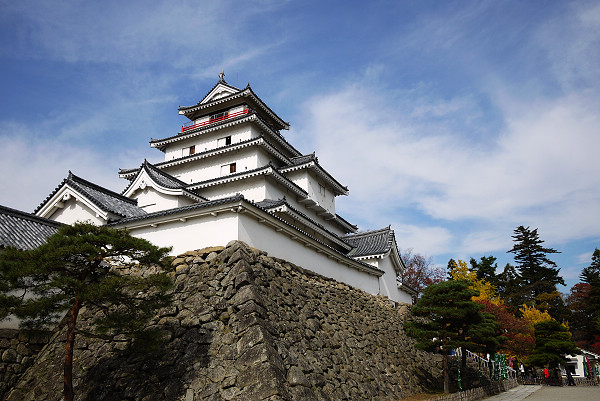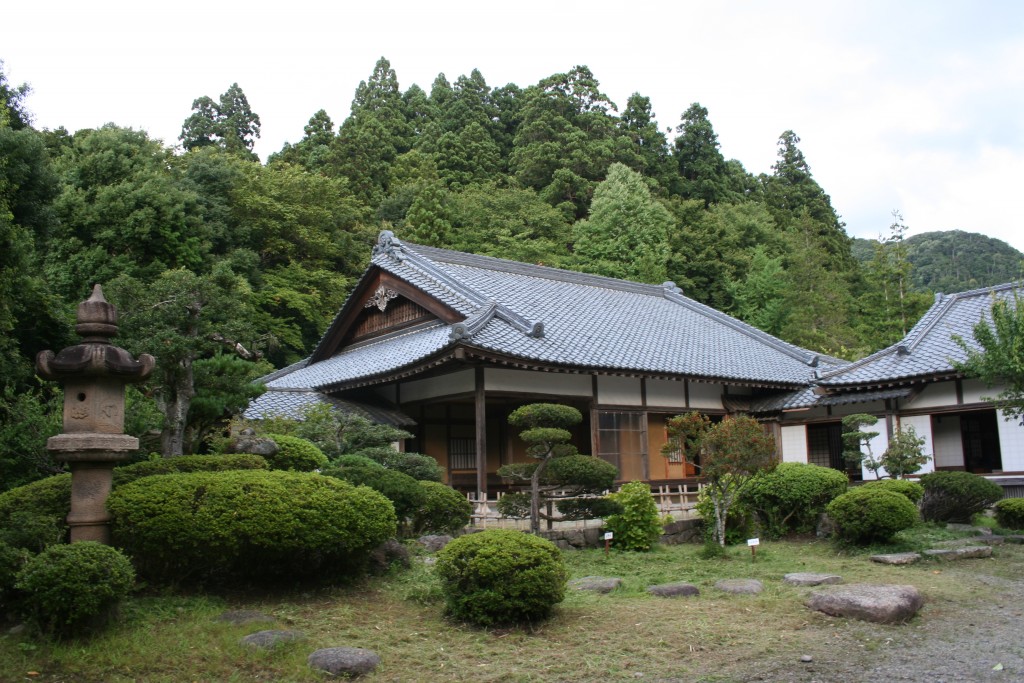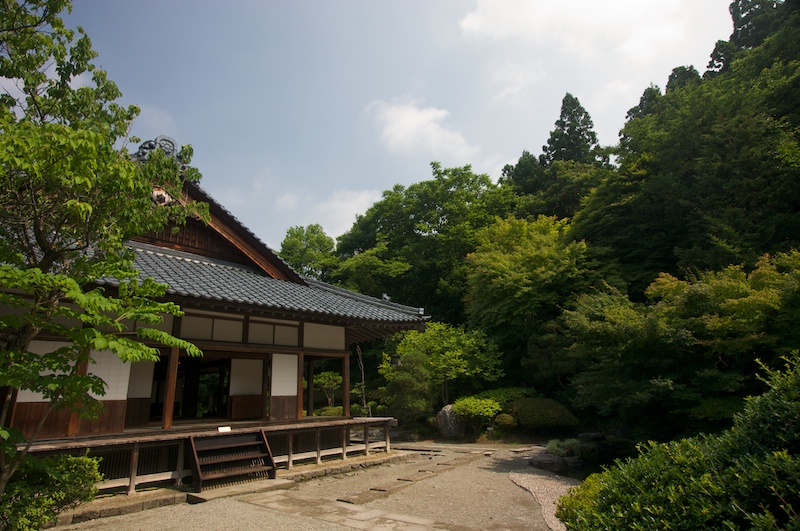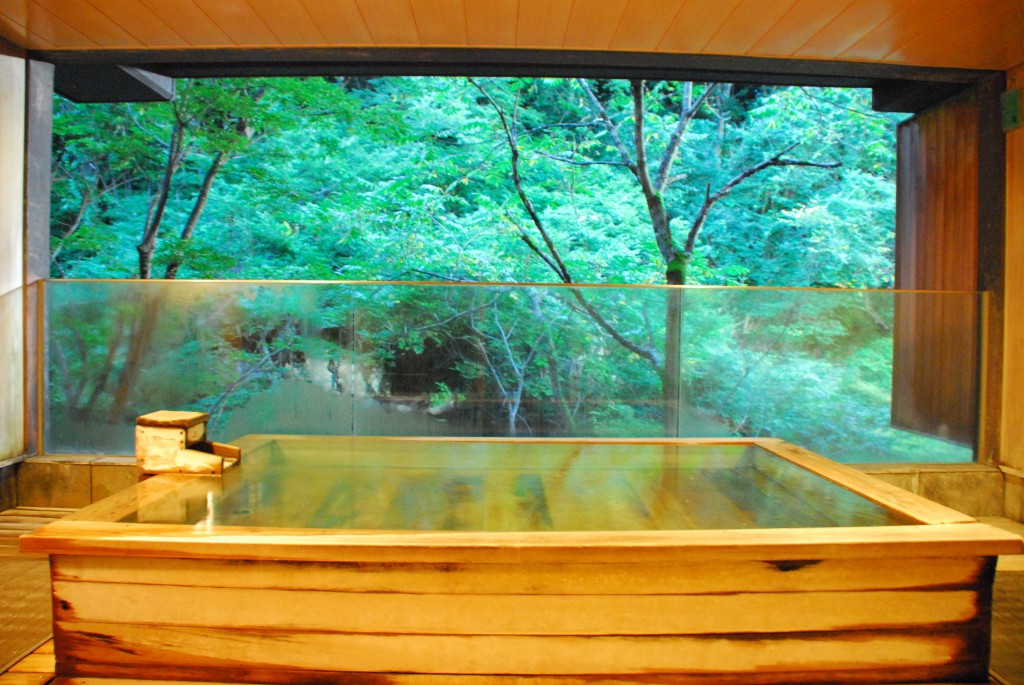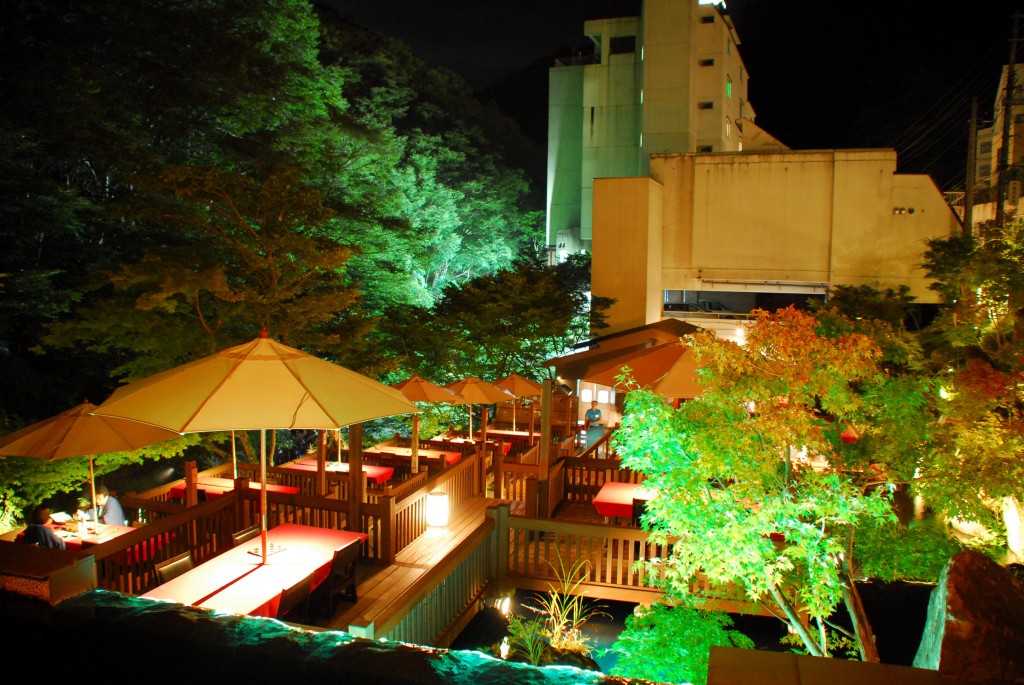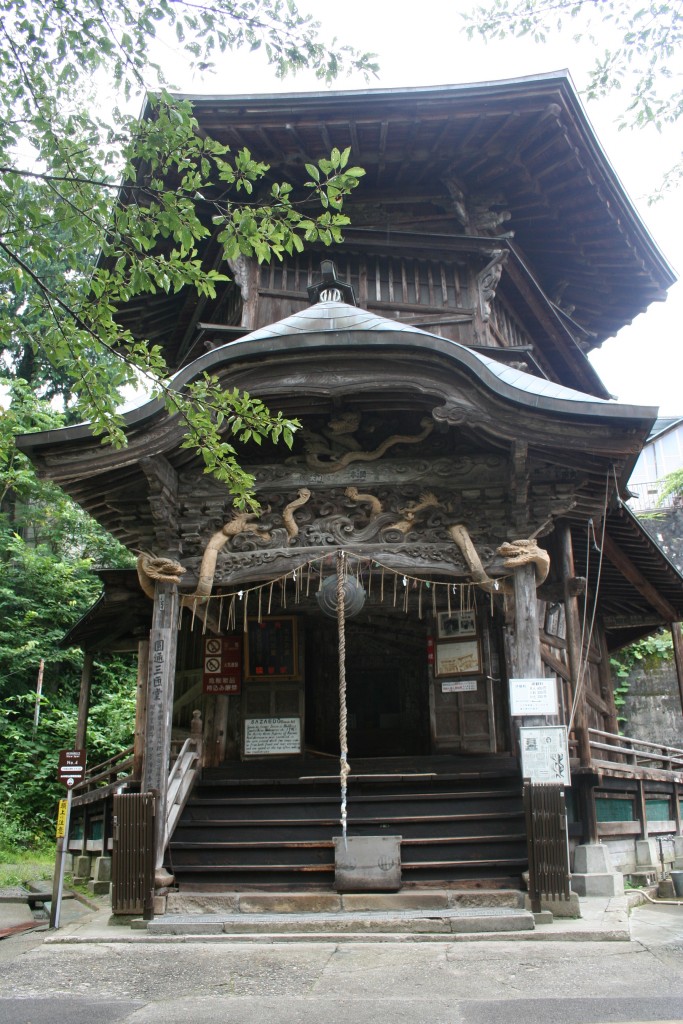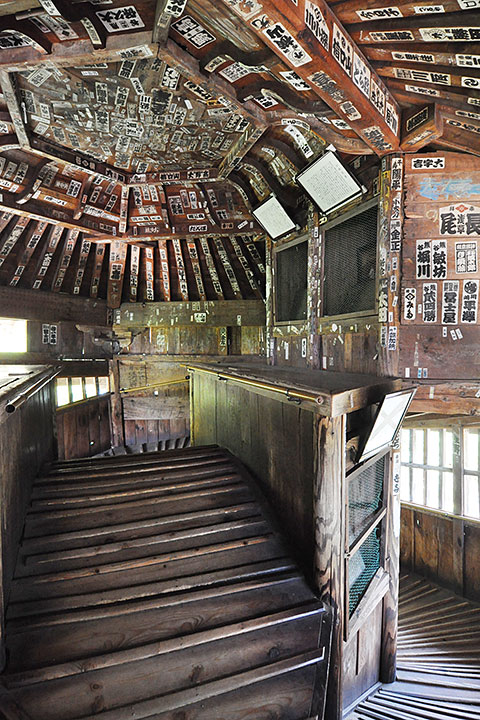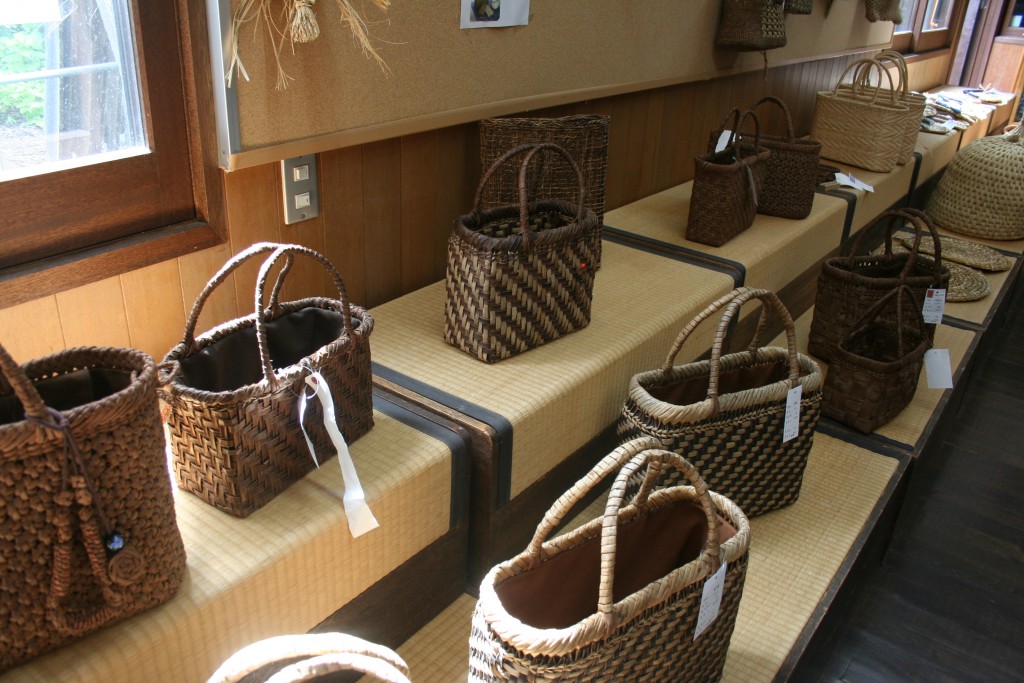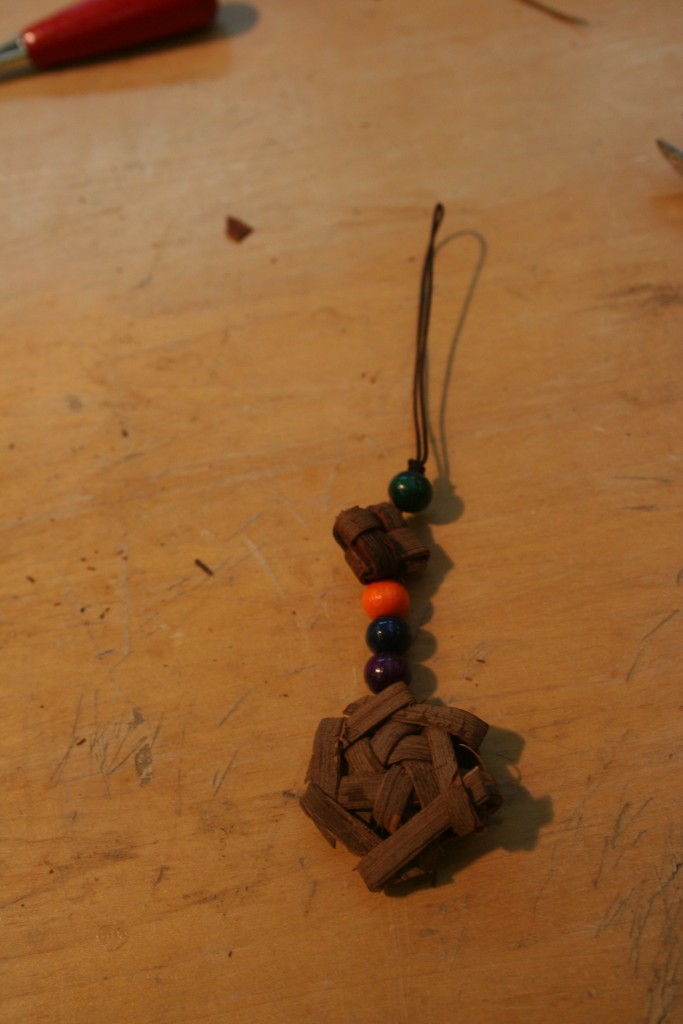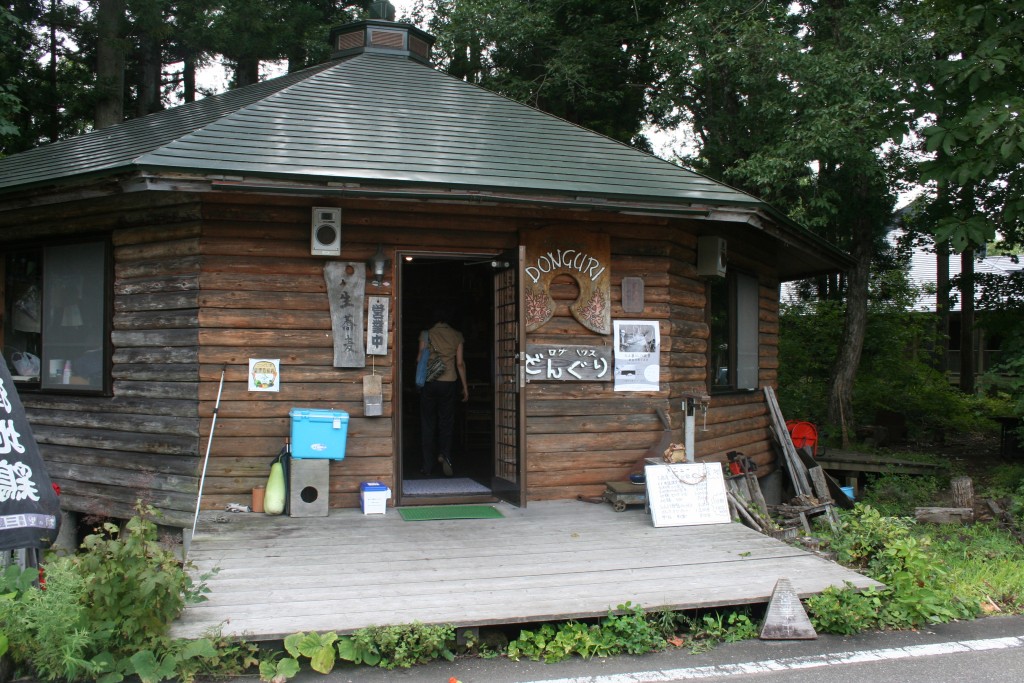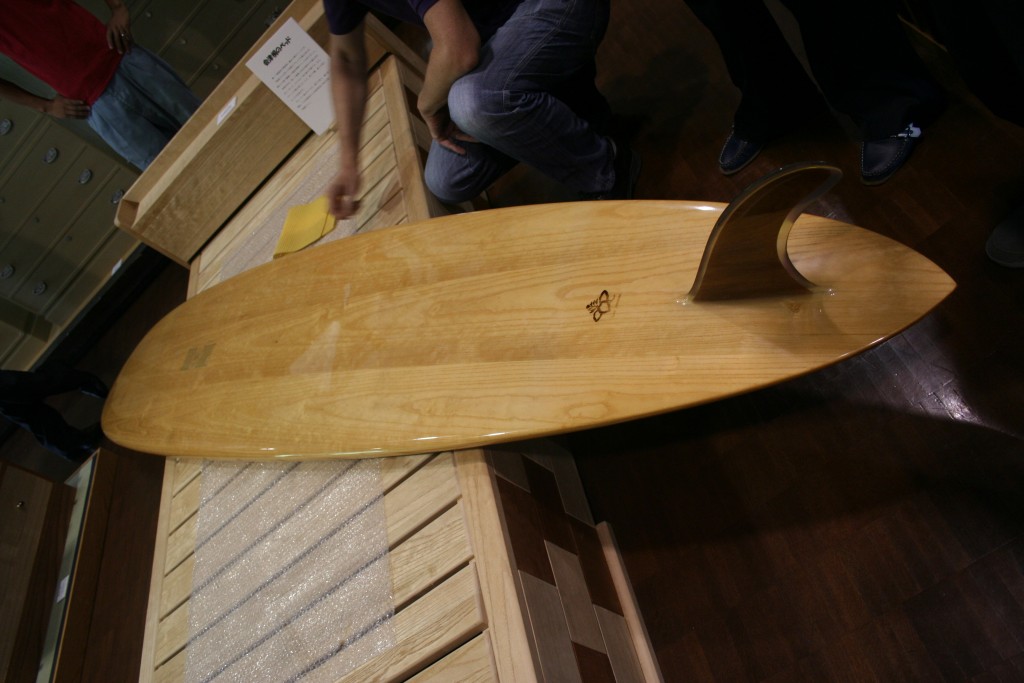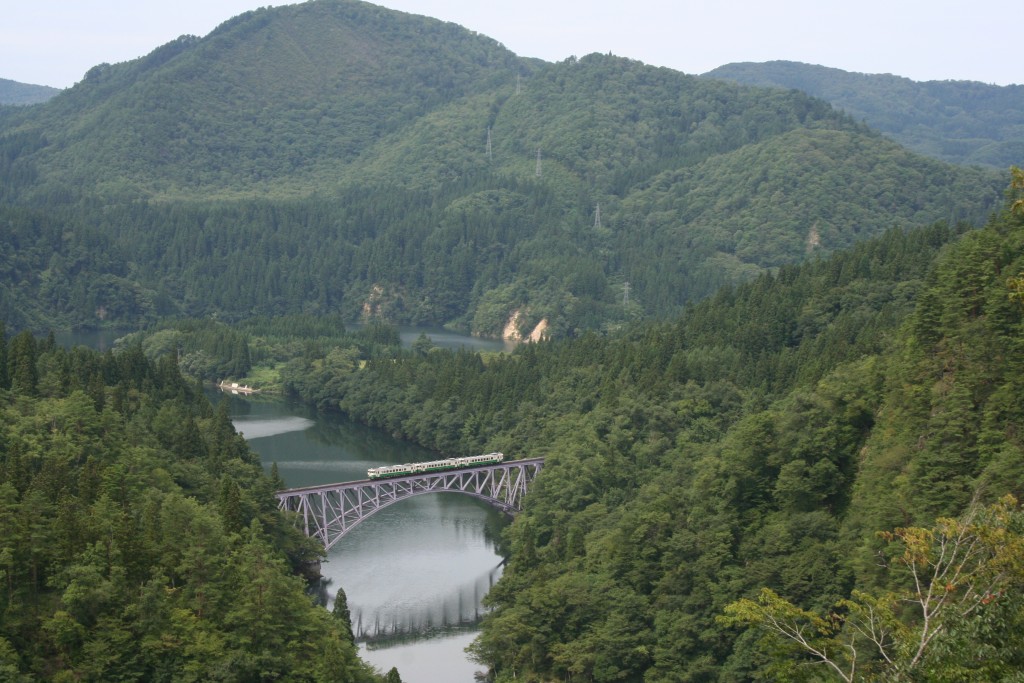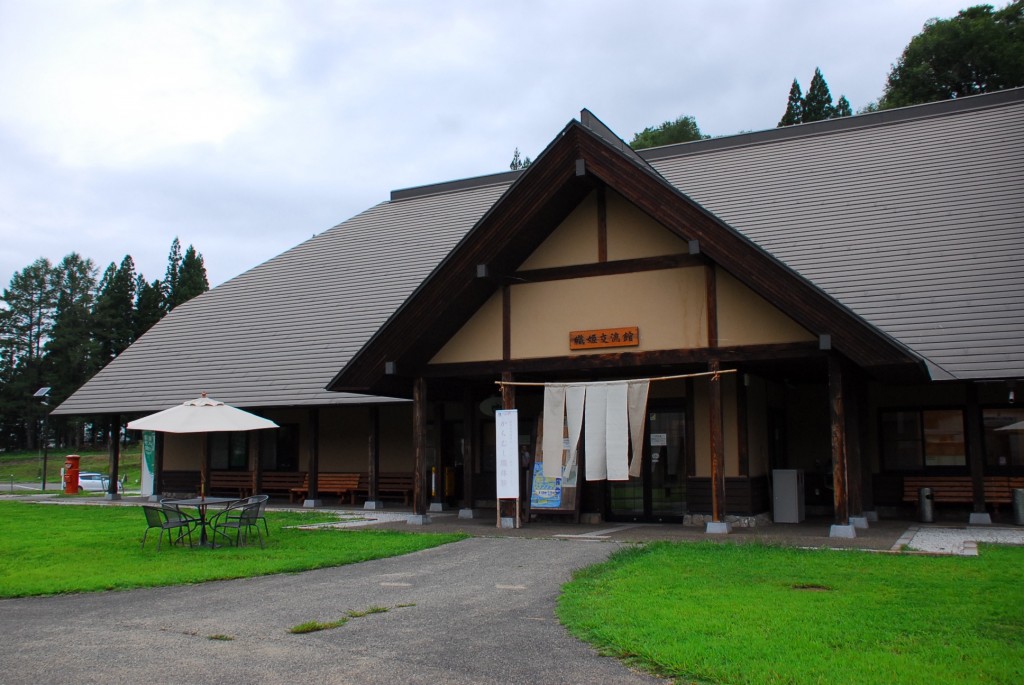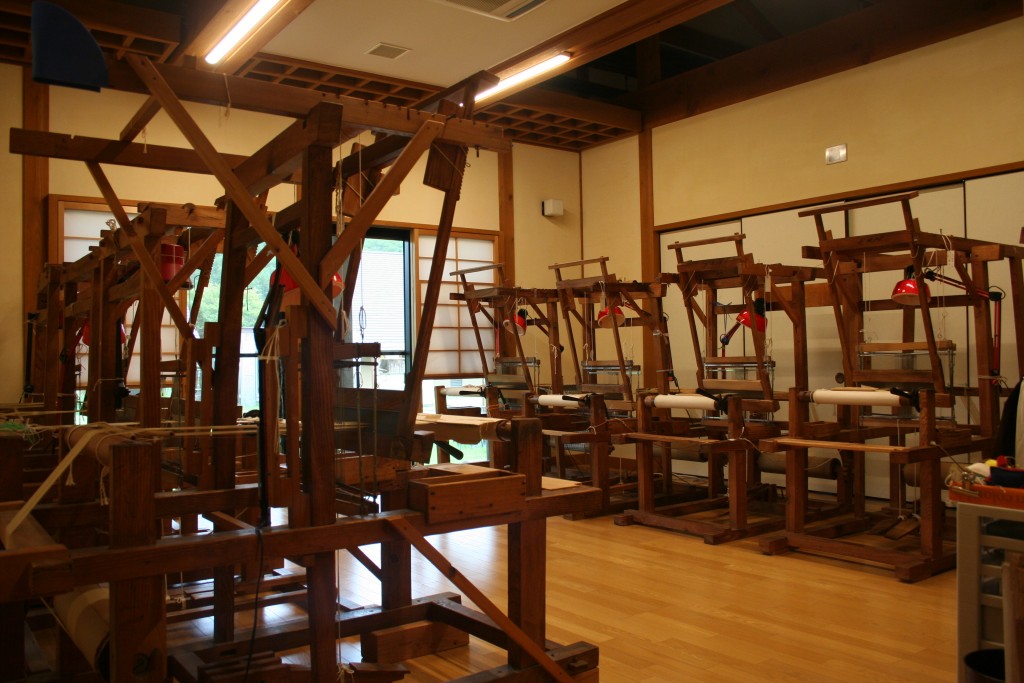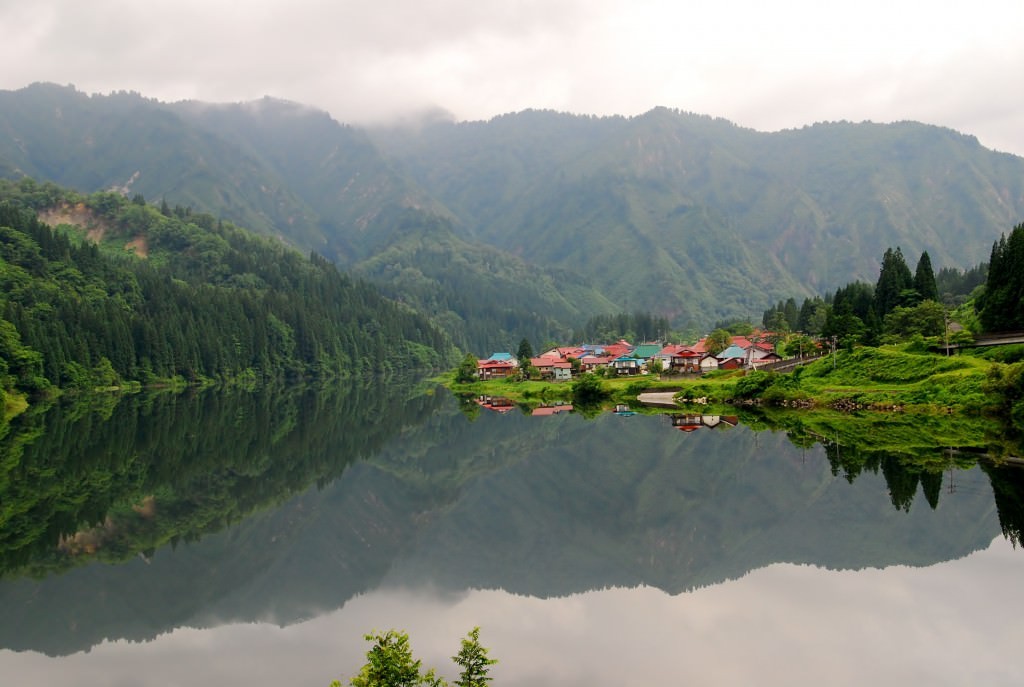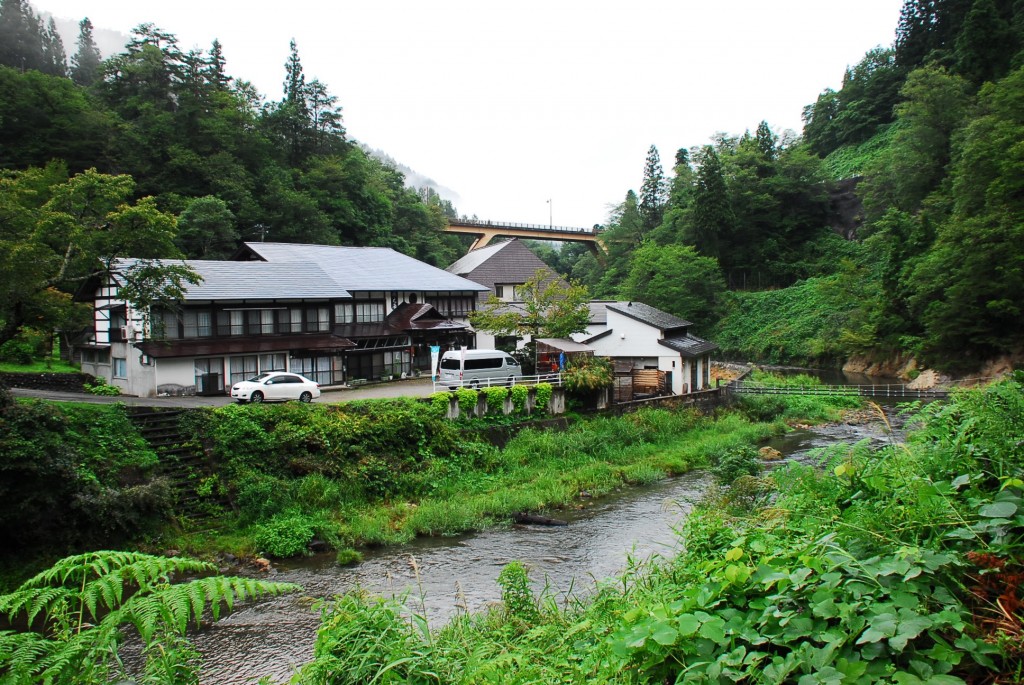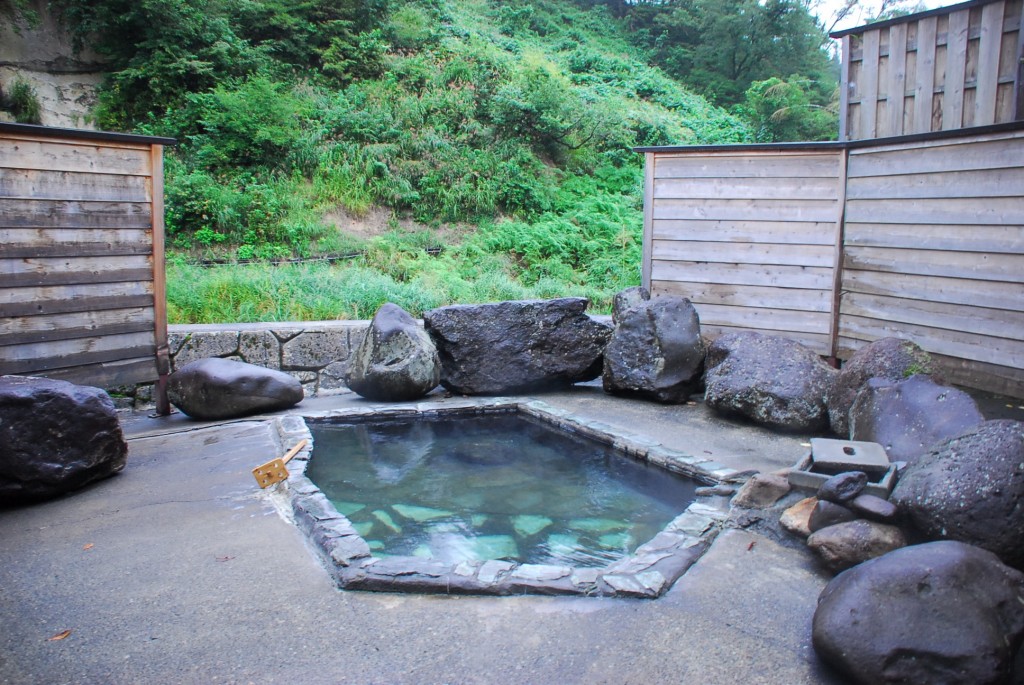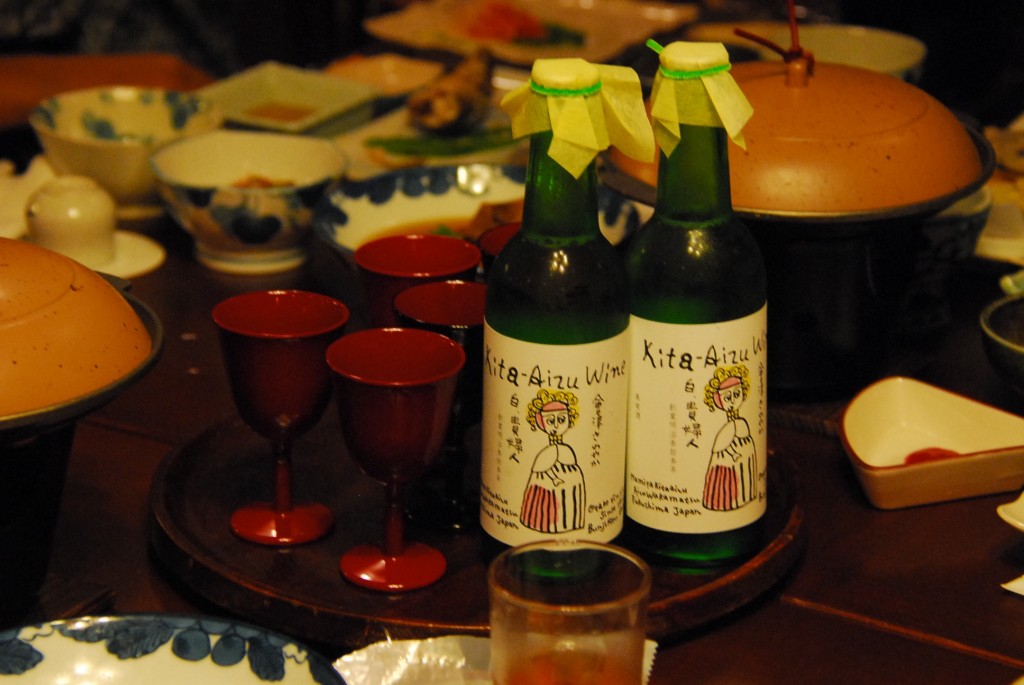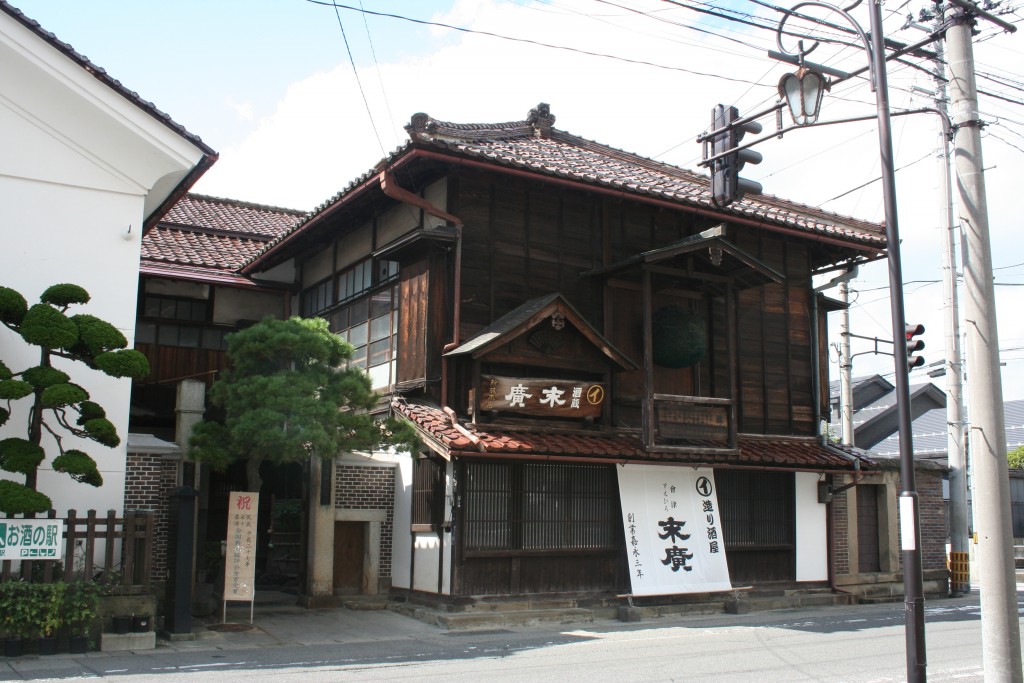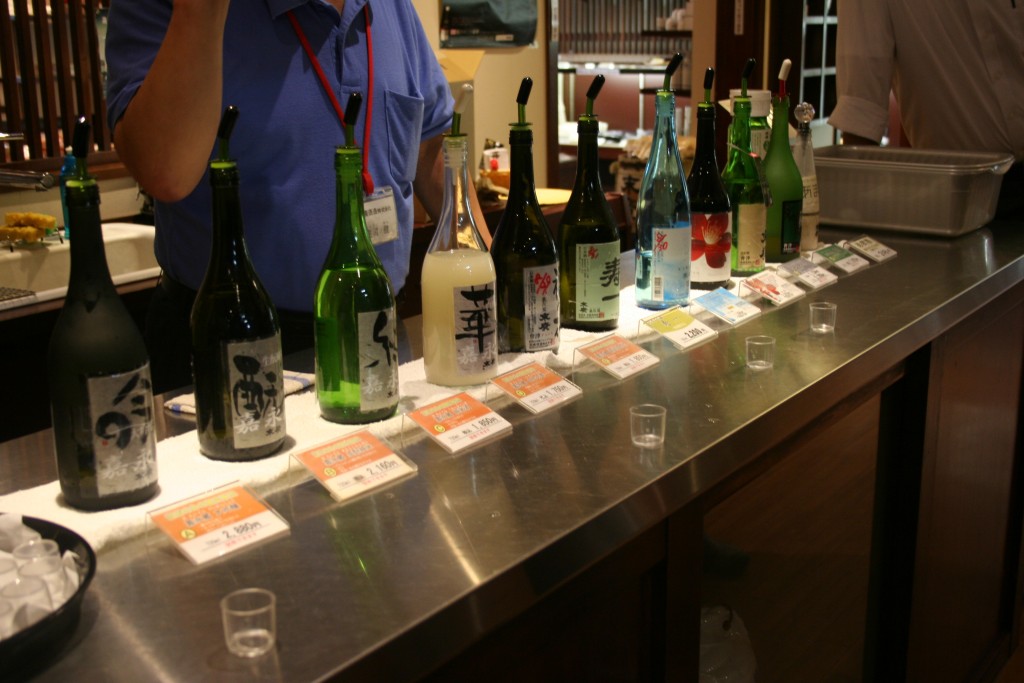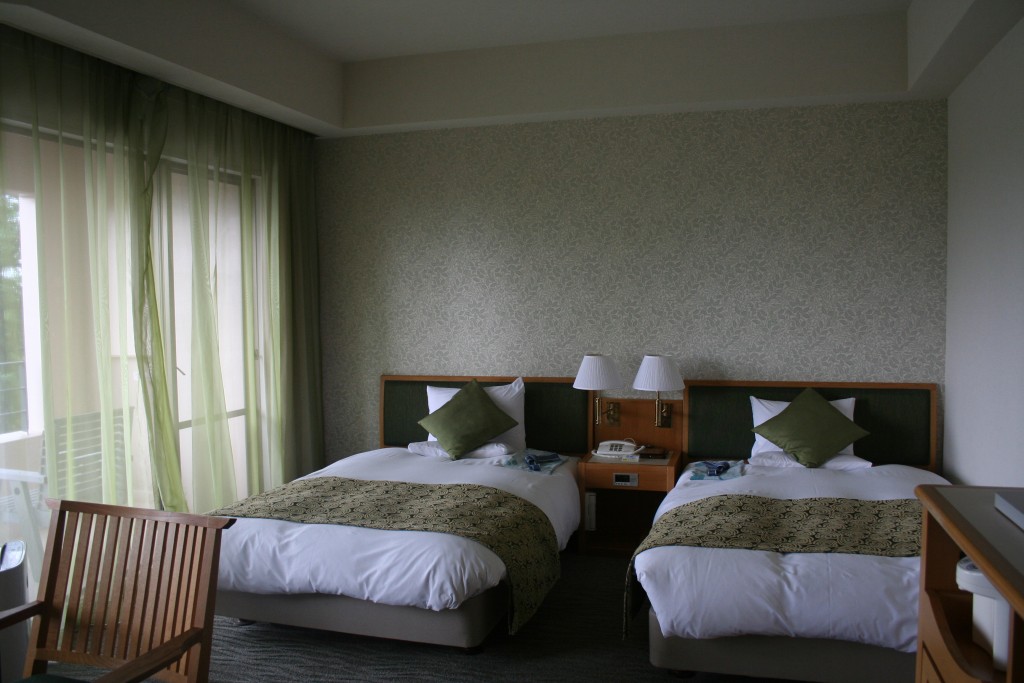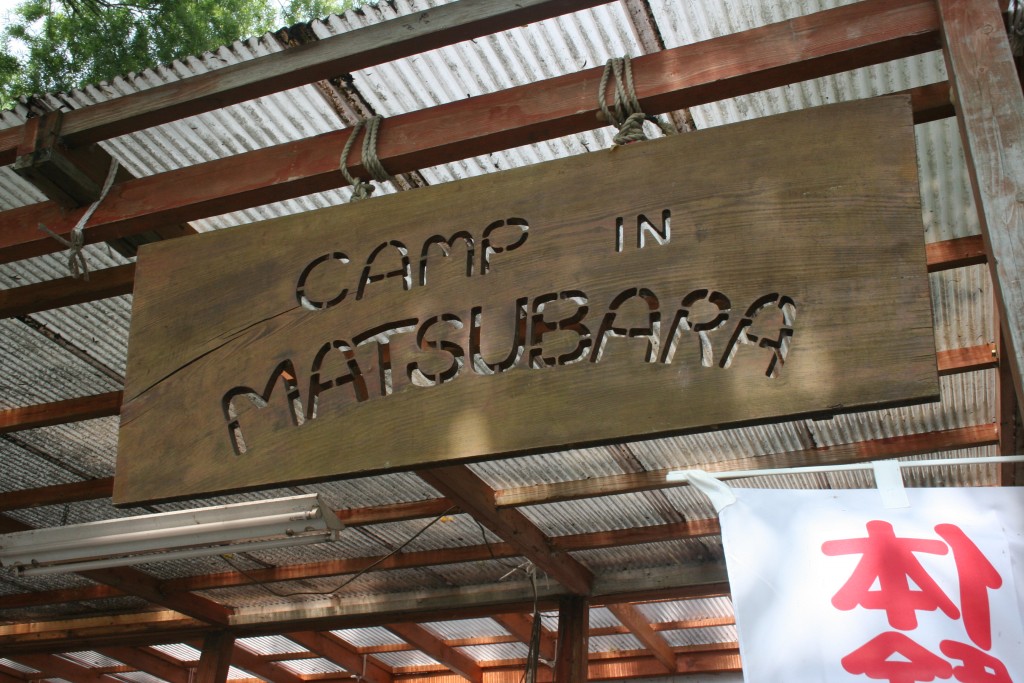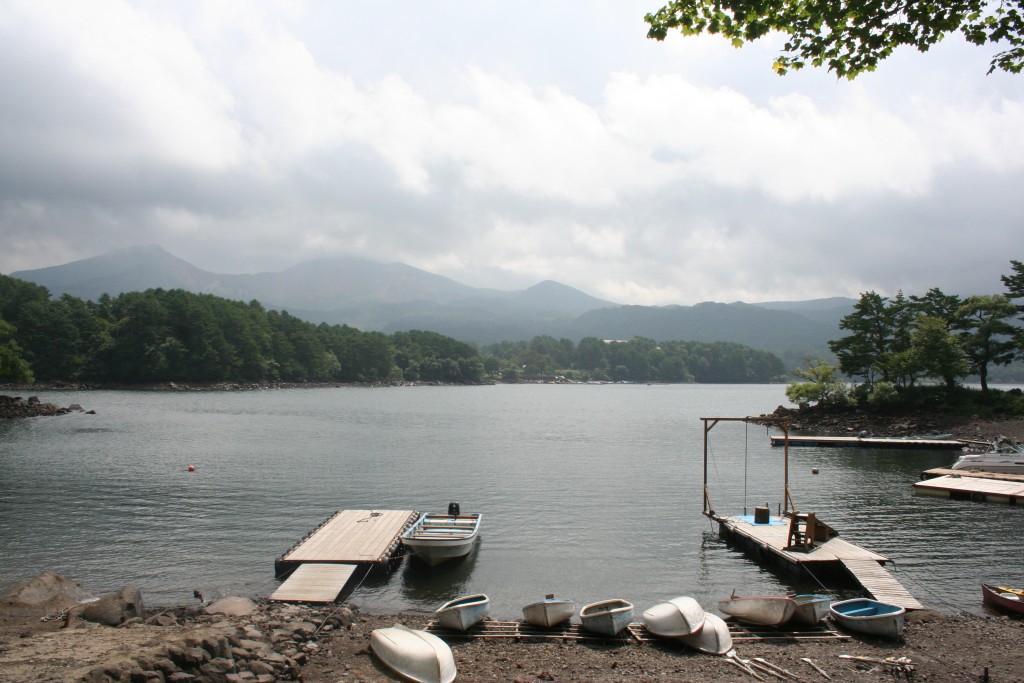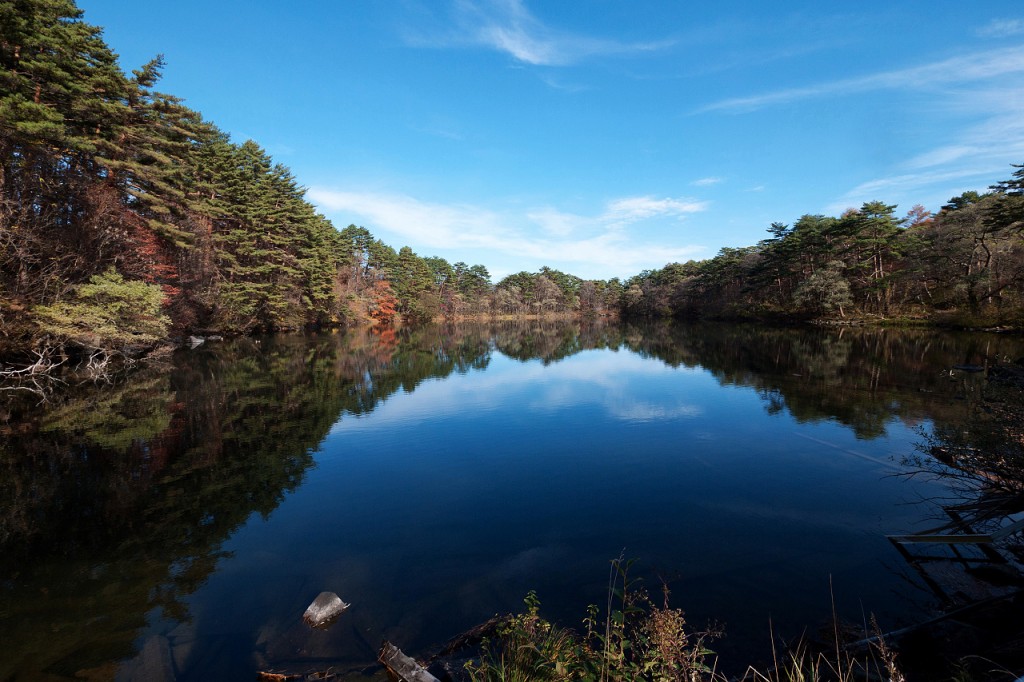
22 Things to Do in the Aizu-Wakamatsu Area
Don't know where else to go that isn't just a big city? Want to make unique memories outside of the usual tourist areas? Try Aizu-Wakamatsu, a historical area that's beautiful and full of surprises!
This post may contain affiliate links. If you buy through them, we may earn a commission at no additional cost to you.
The Aizu-Wakamatsu area is situated in a valley, leading to beautiful landscapes but heavy snowfall in the winter. It was a very important base for the shogunate, and was the setting for one of the largest battles between the shogunate and the imperial Meiji government during the Boshin War. The famous story of the Byakkotai, the 19 teenaged samurai who killed themselves when they thought Aizu had fallen to the imperial forces, occurred on Mt. Iimori, one of the mountains that surrounds the area.
Because of the high amounts of snow, the water in the area is very clean due to the high amounts of runoff, which leads to beautiful hot springs and delicious sake and great food. Between the breathtaking scenery, the dramatic history, and the great food, you should add a trip to Aizu-Wakamatsu to your itinerary.
1. See the Munakata climbing kiln
Photo by Hikaru Kamo.
A climbing kiln is a kiln that takes the slope of the mountain its built on so the heat rides through the chambers like stairs. The Munakata climbing kiln is a designated cultural property and was originally built in the middle of the Edo period, making it the oldest climbing kiln in the whole Tohoku region. Originally it had 7 chambers, but due to the damage of the Tohoku earthquake in 2011, only 3 have been restored. In honor of the restoration, they made and donated about 80 tea bowls for the Todaiji Temple in Nara. You can see the kiln (unfortunately, they cannot accommodate tours when the kiln is being used) and also peruse the pieces available for sale created by Toshihiro Munakata, the current master.
3115 Hongo-Kamiko, Aizu-Misatomachi, Onuma-gun, Fukushima-ken
Homepage: http://www.munakatagama.net/index.html
Click here for Aizu's special tour option that comes with bilingual guides.
Enjoy the traditional culture and hot springs of Aizu region
Discover the real rural Japan and its traditions in Oku Aizu
Click here if you would like to know more about the attractions of the Tohoku region including Aizu
Discover the natural wonders and traditional lifestyle of Tohoku region
2. Make your own pottery
After seeing the pottery at the climbing kiln, you can make and/or decorate your own at Ki no Oto Koubou. You can make your own pottery, with help from staff, using a process called teniberi where the clay sits on a rotating wheel that you control with one hand. You can make items out of 500g of clay for 1000 yen or 1 kg for 2000 yen. If you don't want to challenge making your own items, you can decorate your own for 800 yen. It takes about two months before it's ready to be delivered to your home; shipping within Japan costs 1000 yen and international costs 2000-3000 depending on weight.
Photo by Hikaru Kamo.
3272-1 Setomachi, Aizu-Misato, Onuma-gun, Fukushima-ken
Homepage (Japanese only): http://www.kinooto.com/
Click here for Aizu's special tour option that comes with bilingual guides.
Enjoy the traditional culture and hot springs of Aizu region
Discover the real rural Japan and its traditions in Oku Aizu
Click here if you would like to know more about the attractions of the Tohoku region including Aizu
Discover the natural wonders and traditional lifestyle of Tohoku region
3. Eat traditional Aizu food at Takino
Takino is a famous Japanese restaurant that has been in business since the Kamakura era (1185-1333). You can have traditional Tohoku fare, such as nishin no sanshozuke (herring pickled in malt vinegar with pepper plants) and wappameshi. Wappameshi is a meal with rice and various toppings prepared in a container called wappa, which is a container made of thin sheets of wood used by Aizu woodcutters to take their lunch with them to the mountains. They also have soba that is eaten with a leek and bonito flakes, as shown in the photo below.
5-31 Sakaemachi, Aizuwakamatsu-shi, Fukushima-ken
Homepage: http://www.takino.jp/frame.html
Click here for Aizu's special tour option that comes with bilingual guides.
Enjoy the traditional culture and hot springs of Aizu region
Discover the real rural Japan and its traditions in Oku Aizu
Click here if you would like to know more about the attractions of the Tohoku region including Aizu
Discover the natural wonders and traditional lifestyle of Tohoku region
4. Have a sake tasting at Aizu Homare Sake Brewery
Aizu Homare is one of the best breweries in Tohoku, and has repeatedly won awards at the International Wine Challenge. Here you can take a tour and learn about the sake process before enjoying over 10 varieties of the sake and liqueurs on offer. Their large Japanese garden is also an attraction. There is no entrance fee, and they also offer tours in English.
2706 Tokiwa-cho, Muramatsu, Matsuyama-machi, Kitakata-shi, Fukushima-ken
Homepage (Japanese only): http://www.aizuhomare.jp/
Click here for Aizu's special tour option that comes with bilingual guides.
Enjoy the traditional culture and hot springs of Aizu region
Discover the real rural Japan and its traditions in Oku Aizu
Click here if you would like to know more about the attractions of the Tohoku region including Aizu
Discover the natural wonders and traditional lifestyle of Tohoku region
5. Make your own painted candles
Candles came into use in Japan 500 years ago, and the people of Aizu began painting them 80 years after. In snowy prefectures like Fukushima, these painted candles were used on altars in place of flowers during the winter. Hoshiban has been creating painted candles using wax made from Japanese wax tree seeds since 1772. While most other painted candle makers today make candles using a combination of machinery and craftsmanship, Hoshiban is the only maker in the area that does the entire process by hand. You can paint your own candles as well! It's 1620 yen per person and they take groups of up to 75 people. Reservations are required two days in advance.
3-33 Nanokamachi, Aizu-Wakamatsu, Fukushima-ken
Homepage (Japanese only): http://hoshiban.com/
Click here for Aizu's special tour option that comes with bilingual guides.
Enjoy the traditional culture and hot springs of Aizu region
Discover the real rural Japan and its traditions in Oku Aizu
Click here if you would like to know more about the attractions of the Tohoku region including Aizu
Discover the natural wonders and traditional lifestyle of Tohoku region
6. Visit Tsuruga Castle
Photo by かがみ~ on FlickrThe Aizu area was one of great importance in the control of eastern Japan during the shogunate area and this castle, originally built in 1591, was an outpost that many generals were sent to for a few years during their careers. The castle and the Tokugawa shogunate had very close ties, and as a result they fought against the Meiji government in the Boshin War. The Meiji government attacked the castle using guns for a month before the castle fell. It was rebuilt in 1965, so this year is its 50th anniversary. Entrance fees are 410 yen for adults and 150 yen for children. You can reserve a tour guide in English or Chinese two weeks in advance and choose from three different tour courses. If you're lucky, you might be able to take a photo with a samurai!
1-1 Otemachi, Aizu-Wakamatsu, Fukushima-ken
Homepage: http://www.tsurugajo.com/language/eng/index.html
Click here for Aizu's special tour option that comes with bilingual guides.
Enjoy the traditional culture and hot springs of Aizu region
Discover the real rural Japan and its traditions in Oku Aizu
Click here if you would like to know more about the attractions of the Tohoku region including Aizu
Discover the natural wonders and traditional lifestyle of Tohoku region
7. Visit a samurai's home at the Aizu Bukeyashiki
A bukeyashiki is a samurai residence, and this one served as the quarters for the region's highest ranked samurai, his family, employees, and servants. It was originally burned down during the Boshin War but it was then rebuilt to replicate its appearance as it was in the Edo period. There are dozens of rooms and some of them have mannequins showing scenes from everyday life in the period or dramatic historical events. Entrance fee is 850 yen.
Photo by foliosus on Flickr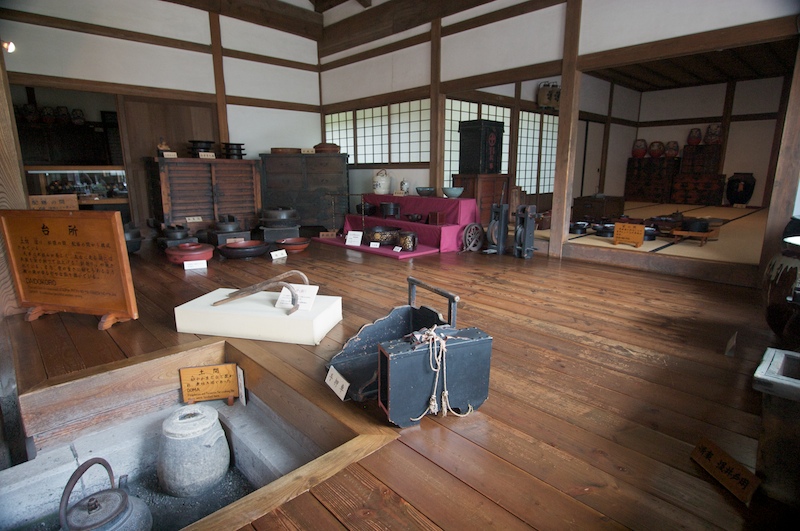 Photo by foliosus on Flickr
Photo by foliosus on Flickr
Innai-1 Higashiyamamachi Oaza Ishiyama, Aizu-Wakamatsu-shi, Fukushima-ken
Click here for Aizu's special tour option that comes with bilingual guides.
Enjoy the traditional culture and hot springs of Aizu region
Discover the real rural Japan and its traditions in Oku Aizu
Click here if you would like to know more about the attractions of the Tohoku region including Aizu
Discover the natural wonders and traditional lifestyle of Tohoku region
8. Stay at Harataki
Photo by Hikaru Kamo.
Higashiyama Onsen is a hot spring resort just east of downtown Aizu. While there are many ryokan and hotels in the area, Harataki is particularly great due to its facilities. There is a large public bath on the premises as well as 6 private open-air baths that you can rent for 50 minutes. They also offer entertainment options such as Go and mahjong boards, ping-pong, karaoke, a lounge, and yukata rental. They also have spa facilities.
Shimohara-235, Higashiyama-machi Oaza Yumoto, Aizu-Wakamatsu-shi, Fukushima-ken
Homepage (Japanese only): http://www.yumeguri.co.jp/
Click here for Aizu's special tour option that comes with bilingual guides.
Enjoy the traditional culture and hot springs of Aizu region
Discover the real rural Japan and its traditions in Oku Aizu
Click here if you would like to know more about the attractions of the Tohoku region including Aizu
Discover the natural wonders and traditional lifestyle of Tohoku region
9. Eat at Kawadoko
Photo by Hikaru Kamo.
Kawadoko is an open-air restaurant run by Harataki that sits next to a river fed by a waterfall. In the evening the restaurant is lit up, giving it a perfectly cozy atmosphere. There is also a foot bath that you can enjoy while waiting for your meal. Many people go in their yukata after enjoying the baths at Harataki. Kawadoko offers fresh, delicious traditional meals. Lunch is available from April 28th to November 3rd, while dinner is available from April 28th to September 30th.
Shimohara-235, Higashiyama-machi Oaza Yumoto, Aizu-Wakamatsu-shi, Fukushima-ken
Homepage (Japanese-only): http://www.yumeguri.co.jp/kawadoko/
Click here for Aizu's special tour option that comes with bilingual guides.
Enjoy the traditional culture and hot springs of Aizu region
Discover the real rural Japan and its traditions in Oku Aizu
Click here if you would like to know more about the attractions of the Tohoku region including Aizu
Discover the natural wonders and traditional lifestyle of Tohoku region
10. Visit the Sazae-do
Architectural Map (http://www.archi-map.jp)Halfway up Mt. Iimori, where the Byakkotai sleep, is a hexagonal temple called Entsu Sansodo but is more popularly known as the Sazae-do. "Sazae" is Japanese for turbo, a kind of shellfish, and the temple has earned that name due to its twisted exterior. The inside is also a twisted slope, making it a building with a double helix structure. It once held 33 statues of the Buddhist Kannon goddess of mercy, but the Meiji government removed all the statues from the premises after they passed a law abolishing Buddhism. The interior is covered in stickers that are actually graffiti from previous visitors. Entrance fee is 400 yen for adults, 300 yen for high school and college students, and 200 yen for children. It's said that Hayao Miyazaki took inspiration from the Sazae-do for the castle in Howl's Moving Castle.
Takizawa-166 Ikkimachi, Oaza Yahata, Aizu-Wakamatsu-shi, Fukushima-ken
Homepage (Japanese-only): http://www.geocities.jp/aizu_sazaedo/
Click here for Aizu's special tour option that comes with bilingual guides.
Enjoy the traditional culture and hot springs of Aizu region
Discover the real rural Japan and its traditions in Oku Aizu
Click here if you would like to know more about the attractions of the Tohoku region including Aizu
Discover the natural wonders and traditional lifestyle of Tohoku region
11. Make your own phone strap out of wild grape tree bark at the Traditional Crafts Center
Because of the high amounts of snowfall that fall in Fukushima, farmers make items out of wild grape tree bark during the winter to support themselves. Because wild grape tree bark is very strong and only becomes stronger the more it's used, it's a prized material for purses and other kinds of bags. Wild grape tree bark can only be harvested two weeks out of the year in June. Because of the labor-intensive process and the rarity of the bark, items made out of this material can be very expensive, but it also comes with the guarantee that a craftsman will repair it if it does get damaged in any way. You can make your own phone strap out of this material for 700 yen. The Center also offers other craft trials, such as making coasters out of Japanese sedge.
Click here for Aizu's special tour option that comes with bilingual guides.
Enjoy the traditional culture and hot springs of Aizu region
Discover the real rural Japan and its traditions in Oku Aizu
Click here if you would like to know more about the attractions of the Tohoku region including Aizu
Discover the natural wonders and traditional lifestyle of Tohoku region
12. Eat at Donguri
After you spend a full morning learning about all the traditional crafts created in the local area, head to Donguri for a hearty meal. The vegetables are all fresh and local, with many of them being from the restaurant's own garden. Its specialty is soba, so definitely give that a try. Teresa Teng once ate there in 1977 when she visited the area, so there are many photographs of her posted by the entrance.
Suwanoue-410, Nairi, Mishima-machi, Onuma-gun, Fukushima-ken
Information (Japanese-only): http://www.aizu-concierge.com/oku/map/spot/10779/
Click here for Aizu's special tour option that comes with bilingual guides.
Enjoy the traditional culture and hot springs of Aizu region
Discover the real rural Japan and its traditions in Oku Aizu
Click here if you would like to know more about the attractions of the Tohoku region including Aizu
Discover the natural wonders and traditional lifestyle of Tohoku region
13. See items made from paulownia wood
Paulownia wood is a material used to make traditional chests of drawers called tansu. It's a very meticulous process that requires skilled techniques by craftsmen. At Ozegaido Mishima-juku rest area, you can see not only tansu chests, but also beds, chairs, and experimental items made from paulownia wood. There is also a surfboard on display. A surfboard made from paulownia wood is said to be the Rolls Royce of surfboards due to its lightness and high quality.
Tenyabara-610 Kawai, Mishima-machi, Onuma-gun, Fukushima-ken
Homepage (Japanese-only): http://www.thr.mlit.go.jp/road/koutsu/Michi-no-Eki/fukusima/fu13.html
Click here for Aizu's special tour option that comes with bilingual guides.
Enjoy the traditional culture and hot springs of Aizu region
Discover the real rural Japan and its traditions in Oku Aizu
Click here if you would like to know more about the attractions of the Tohoku region including Aizu
Discover the natural wonders and traditional lifestyle of Tohoku region
14. Wait for the train to pass over the Tadami River
The view of the Tadami Line train passing over the lavender Daiichi Tadamigawa Kyourou bridge will make you understand the feelings of trainspotters. The bridge is painted the color of paulownia flowers, and the picturesque sight of the small train chugging along the rails will make you feel like you're watching a scene right out of a Ghibli movie. Walk from the Ozegaido Mishima-juku rest area to the mountains right nearby and hike about 10 minutes to reach the view point.
Information page (Japanese-only): http://dc-fukushima.jp/kanko/disp.html?id=2230
Click here for Aizu's special tour option that comes with bilingual guides.
Enjoy the traditional culture and hot springs of Aizu region
Discover the real rural Japan and its traditions in Oku Aizu
Click here if you would like to know more about the attractions of the Tohoku region including Aizu
Discover the natural wonders and traditional lifestyle of Tohoku region
15. Weave your very own coaster
Photo from Hikaru Kamo.
At the Showamachi Karamushiori no Sato, you can learn about the traditional art of weaving using fibers made from the ramie plant and view pieces at the museum. There is a program here where they accept four applicants from around the country to work here as apprentices who learn how to weave from scratch. You can learn from one of these apprentices (women are called Orihime, men are called Hikoboshi from the Tanabata story) how to make your very own coaster using a loom for 1080 yen. Reservations are not required but are accepted.
Uenohara-1 Sagura, Showamachi, Onuma-gun, Fukushima-ken
Homepage (Japanese-only): http://www.vill.showa.fukushima.jp/sato.stm
Click here for Aizu's special tour option that comes with bilingual guides.
Enjoy the traditional culture and hot springs of Aizu region
Discover the real rural Japan and its traditions in Oku Aizu
Click here if you would like to know more about the attractions of the Tohoku region including Aizu
Discover the natural wonders and traditional lifestyle of Tohoku region
16. Enjoy the beautiful scenery from the Kaneyama Fureai Hiroba
Photo by T.YugeThe Kaneyama Fureai Hiroba is a viewpoint on the side of the road where you can gaze out at the beautiful sight of the village of Oshi sitting on the very edge of the calm Tadami River. This is the same river that you saw from the mountain viewpoint, and if you're lucky, you might be able to catch another glimpse of the Tadami Line train running along the coast of the river heading towards Oshi. This viewpoint sits along the side of national highway 262 but if you take the train to Aizukawaguchi, you can walk to it.
Information (Japanese-only): http://www.pref.fukushima.lg.jp/uploaded/attachment/32651.pdf
Click here for Aizu's special tour option that comes with bilingual guides.
Enjoy the traditional culture and hot springs of Aizu region
Discover the real rural Japan and its traditions in Oku Aizu
Click here if you would like to know more about the attractions of the Tohoku region including Aizu
Discover the natural wonders and traditional lifestyle of Tohoku region
17. Stay at Taki no Yu
Photo by Hikaru Kamo.
Nishiyama Onsen is another hot spring resort in Aizu, and the recommended ryokan to stay at is Taki no Yu. At Taki no Yu, there are two medium-sized baths as well as an open-air bath. You can go just for the day and enjoy the baths and a meal, or stay the night in a room with the view of river. They also offer skincare products made using the water of Nishiyama Onsen, which is known for its mineral properties that are good for your skin.
Photo by Hikaru Kamo.
Nagasaka-829 Sunakohara, Yanaizu-machi, Kawanuma-gun, Fukushima-ken
Homepage (Japanese-only): http://www.takinoyu.info/
Click here for Aizu's special tour option that comes with bilingual guides.
Enjoy the traditional culture and hot springs of Aizu region
Discover the real rural Japan and its traditions in Oku Aizu
Click here if you would like to know more about the attractions of the Tohoku region including Aizu
Discover the natural wonders and traditional lifestyle of Tohoku region
18. Enjoy Aizu wine
Photo by Hikaru Kamo.
While you're at Taki no Yu, you can also enjoy Kita-Aizu wine with your meal. This wine is brewed at the Ootake Vineyard in Kita-Aizu and they've been brewing wine since the year 1900. There are red, white, and rose varieties. When people think of Japanese liquors, very rarely does wine come up; try it while you have the chance.
Click here for Aizu's special tour option that comes with bilingual guides.
Enjoy the traditional culture and hot springs of Aizu region
Discover the real rural Japan and its traditions in Oku Aizu
Click here if you would like to know more about the attractions of the Tohoku region including Aizu
Discover the natural wonders and traditional lifestyle of Tohoku region
19. Have a sake tasting at Suehiro Brewery
Suehiro Brewery is one of the largest and most famous breweries in the Tohoku region. It is a family-owned brewery started in 1850 and is on its eighth generation. They offer tours every 30 minutes from 9AM to 4:30PM, and you can take a tour without a reservation unless it's a group of more than 10 people. There is also a cafe that offers original sake-infused recipes that are designed by the owner's wife. Occasionally they host events like small concerts as well. If you buy more than 5000 yen worth, then shipping is free.
12-38 Nisshinmachi, Aizu-Wakamatsu-shi, Fukushima-ken
Homepage (Japanese-only): http://www.sake-suehiro.jp/top.html
Click here for Aizu's special tour option that comes with bilingual guides.
Enjoy the traditional culture and hot springs of Aizu region
Discover the real rural Japan and its traditions in Oku Aizu
Click here if you would like to know more about the attractions of the Tohoku region including Aizu
Discover the natural wonders and traditional lifestyle of Tohoku region
20. Stay at Tokyu Hotel Grand Deco
The Hotel Grand Deco is popular especially in the winter for its ski facilities, but it's beautiful throughout the whole year thanks to its verdant facilities situated in the mountains. The fall foliage is a treat for the eyes, the spring blooms are beautiful, and in the summer you can walk to the waterfalls to cool down. On top of skiing, you can rent items for sports such as golf clubs or tennis rackets. Many people also get married here, even in the winter, so you might be able to catch the sight of a wedding party in the snow!
Arasunasawayama Hibara, Kitashiobara, Yama-gun, Fukushima-ken
Homepage: http://www.grandeco.com/english/
Click here for Aizu's special tour option that comes with bilingual guides.
Enjoy the traditional culture and hot springs of Aizu region
Discover the real rural Japan and its traditions in Oku Aizu
Click here if you would like to know more about the attractions of the Tohoku region including Aizu
Discover the natural wonders and traditional lifestyle of Tohoku region
21. Go canoeing and camping in Matsubara
Matsubara is a camping area by Mt. Bandai that's open all year. In the warmer months, you can canoe, swim, fish, kayak, make a raft, and ride a mountain bike around the rough terrain. In the winter months, you can go ice fishing on the lake! Many of the plans come with a steak barbecue dinner included. If overnight camping's not your thing, you can simply go for the day for a fun few hours.
Kengamine-1093 Hibara, Kitashiobara, Yama-gun, Fukushima-ken
http://www13.plala.or.jp/hibarako/index.html
Click here for Aizu's special tour option that comes with bilingual guides.
Enjoy the traditional culture and hot springs of Aizu region
Discover the real rural Japan and its traditions in Oku Aizu
Click here if you would like to know more about the attractions of the Tohoku region including Aizu
Discover the natural wonders and traditional lifestyle of Tohoku region
22. Check out the Goshiki-numa
Photo by かがみ~ on FlickrThe Goshiki-numa are a cluster of five volcanic lakes at the foot of Mt. Bandai that each have a unique color due to the mineral deposits in the water. The colors can change depending on time of year and the weather. There is a walking trail of about 4km that allows people to see every lake and it's rather popular when the weather is nice. You can also row in the lakes, something that is particularly popular with couples. There is a fish in the lake that has a heart-shaped mark on its side; it's said that if you see this fish, your love will last forever. Try to look for it!
Kengamine, Hibaraaza, Oaza, Yama-gun, Kitashiobara-mura, Fukushima-ken
http://www.jnto.go.jp/eng/location/regional/fukushima/urabandai.html
Many of these activities require a car, and it may be difficult to do some of these things if you don't speak Japanese. If you're interested, there are plans and tours that include both transportation and a bilingual guide that will take you around the Aizu area for a fun 3-night 2-day tour!
The Power of Water tour highlights the bounty that clean water brings by focusing on sake breweries and onsen, as well as traditional crafts. For more details, click the below link
The Power of Water tour
This tour gives you transportation and a guide for the first day but gives you your second day to walk around freely and create your own memories. For more details, click the below link.
Enjoy the traditional culture and hot springs of Aizu region
Enjoy the history and traditions of beautiful region with delicious food and liquor and relaxing baths while you're in Japan!
The information in this article is accurate at the time of publication.

